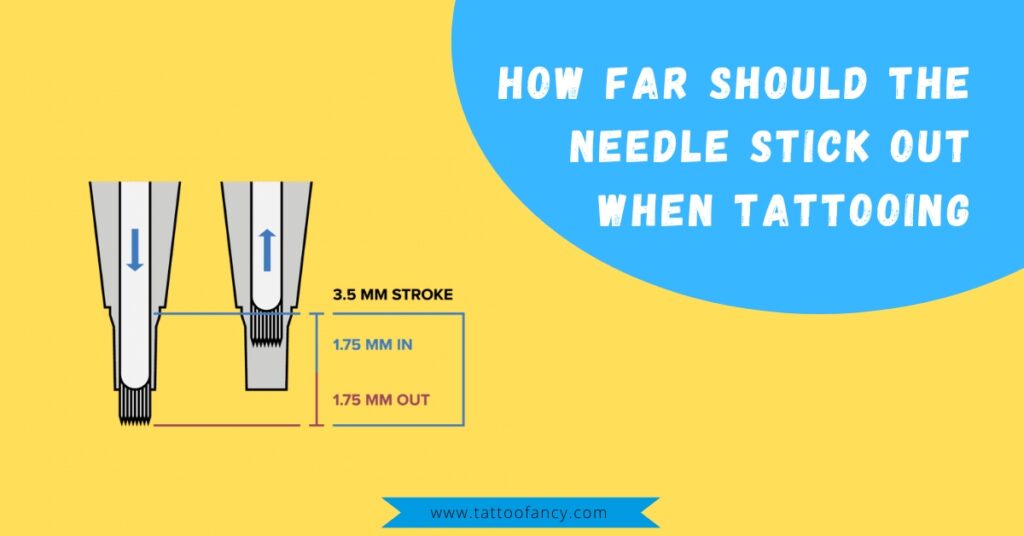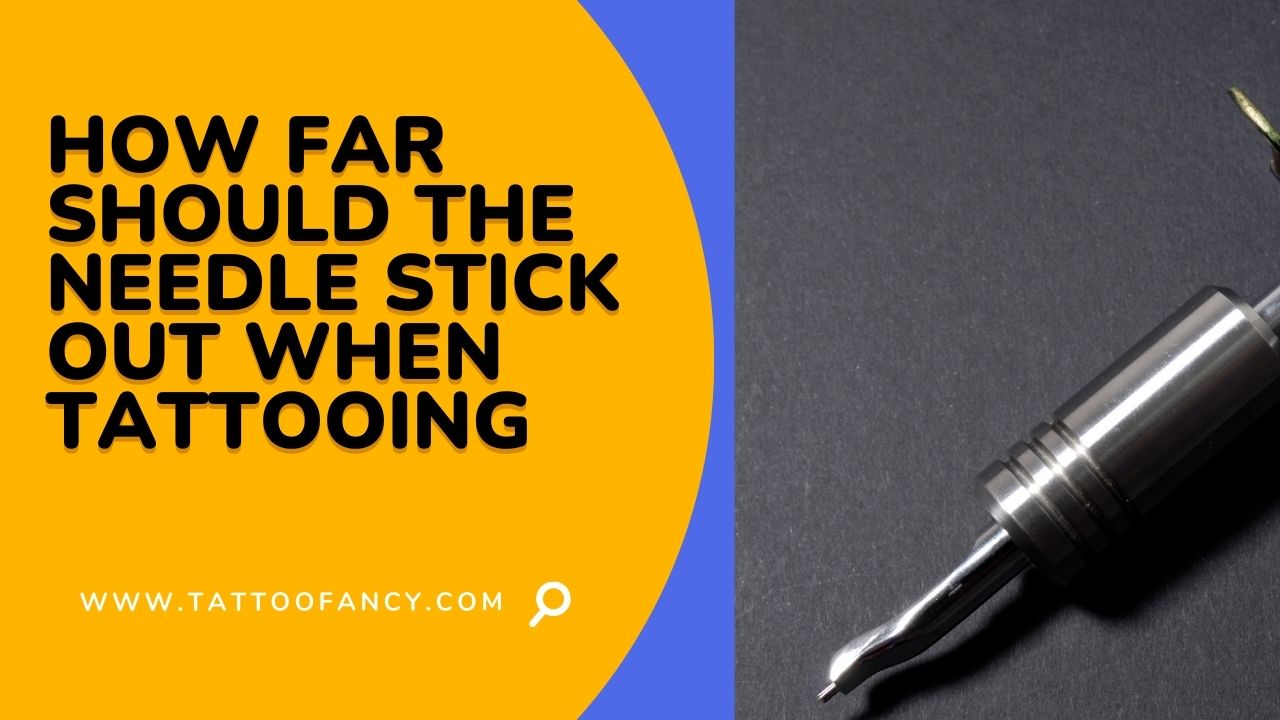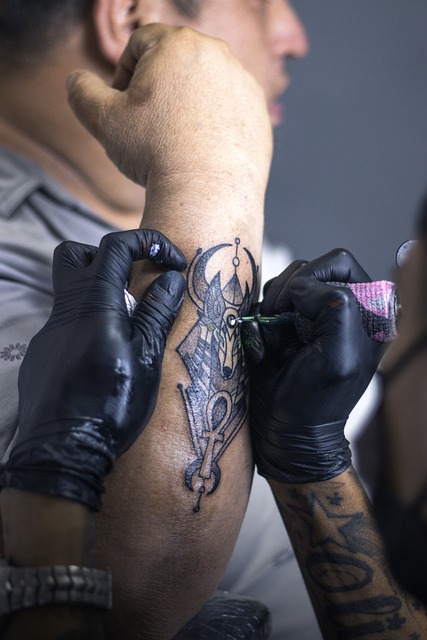
If you’re just starting out in the field of tattooing, one of the things that you may be curious about is how far the needle should stick out when tattooing. A common question for new tattoo artists, it’s important to understand the proper needle depth to ensure a high-quality, safe, and effective tattooing process. In this article, we’ll explore the ideal needle depth for tattooing, as well as some tips on how to manage your needle depth for optimal tattoo results.
A. The importance of finding the right needle depth
Needle depth is one of the most important factors in achieving successful acupuncture treatments. If the needle is not inserted to the proper depth, the treatment will not be effective.
There are a few different methods that acupuncturists use to determine the correct needle depth. The first is by palpation, which is when the acupuncturist feels for the tissue change under the skin. The second is by using a measurement tool, such as a ruler or a guide needle.
The third and most accurate method is by using an electronic needle depth gauge. This gauge uses a sensors to measure the depth of the needle under the skin.
No matter which method is used, it is important to find the right needle depth in order to achieve successful acupuncture treatments.
B. The dangers of going too deep or too shallow
When diving, it is important to be aware of the dangers of going too deep or too shallow. If you go too deep, you may not be able to equalize the pressure in your lungs and you may experience pain or even burst a lung. If you go too shallow, you may not be able to get enough oxygen and you may experience hypoxia.
C. How to find the perfect depth for your tattoo

There is no one perfect depth for all tattoos, as the right depth depends on the individual tattoo and the person’s skin. Generally, the deeper the tattoo, the longer it will last without fading. However, deeper tattoos are also more painful to get and take longer to heal.
If you are unsure of how deep you would like your tattoo, talk to your artist about what would work best for your particular design. They will be able to help you choose a depth that will give you the results you want while also taking your skin type into account.
A. The dangers of going too deep
It is important to be careful when using a niddle because if you go too deep, you can puncture your skin and cause bleeding. If the niddle is not clean, you could also introduce bacteria into your skin which could lead to an infection.
B. The importance of avoiding going too deep
There are many reasons why it is important to avoid going too deep when diving. The most obvious reason is to avoid getting hurt. Going too deep can result in serious injuries if you hit the bottom or get caught in something.
Another reason to avoid going too deep is because it can be disorienting and disorientation can lead to panic. When you are deep underwater it can be difficult to tell which way is up and this can cause you to start swimming in the wrong direction. This can lead to you getting lost and/or running out of air.
Finally, going too deep can also damage your ears. The pressure of the water can cause your eardrums to rupture which can be extremely painful. It can also lead to hearing loss.
C. What to do if you accidentally go too deep
If you accidentally go too deep while diving, the first thing you should do is stop descending. If you cannot stop descending, then you need to start ascending as quickly as possible. If you cannot ascend, then you need to find something to grab onto that will stop you from descending further. Once you have stopped descending, you can then start ascending slowly and carefully. If you ascend too quickly, you may get hurt from the sudden change in pressure.
III. Going too shallow
A. The dangers of going too shallow
When diving, it is important to be aware of the dangers of going too shallow. Divers can be seriously injured if they hit the bottom of the pool or ocean. This can cause major internal bleeding, broken bones, and even death. It is important to always check the depth of the water before diving, and to never dive into water that is too shallow.
B. The importance of avoiding going too shallow
When scuba diving, it is important to avoid going too shallow. If a diver goes too shallow, they risk decompression sickness, also known as “the bends.” This is a condition caused by nitrogen bubbles forming in the blood and tissues. It can cause severe pain, paralysis, and even death.
C. What to do if you accidentally go too shallow
If you accidentally go too shallow while diving, the first thing you should do is stop descending. If you continue descending, you run the risk of hitting the bottom and injuring yourself. Once you stop descending, check your depth gauge to see how shallow you are. If you are at a depth of 10 feet or less, start swimming towards the surface. If you are deeper than 10 feet, you will need to use a safety stop to slowly ascend to the surface.
IV. The perfect depth
A. How to find the perfect depth for your tattoo
There is no one perfect depth for a tattoo. The depth of a tattoo will depend on a variety of factors, including the size and location of the tattoo, the type of ink being used, and the individual’s skin type.
Some people may prefer a shallow depth for their tattoo so that it is less likely to fade over time, while others may choose a deeper depth so that the tattoo will have a more pronounced look. Ultimately, it is up to the individual to decide what depth is right for them.
B. The benefits of getting the perfect depth
The benefits of getting the perfect depth are many. A good depth allows you to have complete control over your movements and provides a stable platform for you to work from. This in turn leads to improved accuracy and consistency in your work. Additionally, a perfect depth also gives you the ability to use both hands equally when working, which can be very helpful when using tools or performing other tasks.
C. How to avoid going too deep or too shallow
When boating, it is important to be aware of the depth of the water. If the water is too shallow, the boat could run aground. If the water is too deep, the boat could be pulled under by the current.
There are a few things that can be done to avoid going too deep or too shallow. First, it is important to check the depth of the water before getting in the boat. This can be done with a depth finder or by looking at a map of the area.
Second, once in the boat, be aware of the depth of the water around you. If you start to feel the boat getting pulled by the current, or if the water becomes too shallow, you can drop anchor to stop the boat.
Third, if you are in an area with a lot of currents, it is important to wear a life jacket. This will help you stay afloat if the boat does get pulled under.
fourth, it is important to have a plan B in case you do end up in water that is too deep or too shallow. If you have a life jacket and a way to signal for help, you will be more likely to be safe until help arrives.


